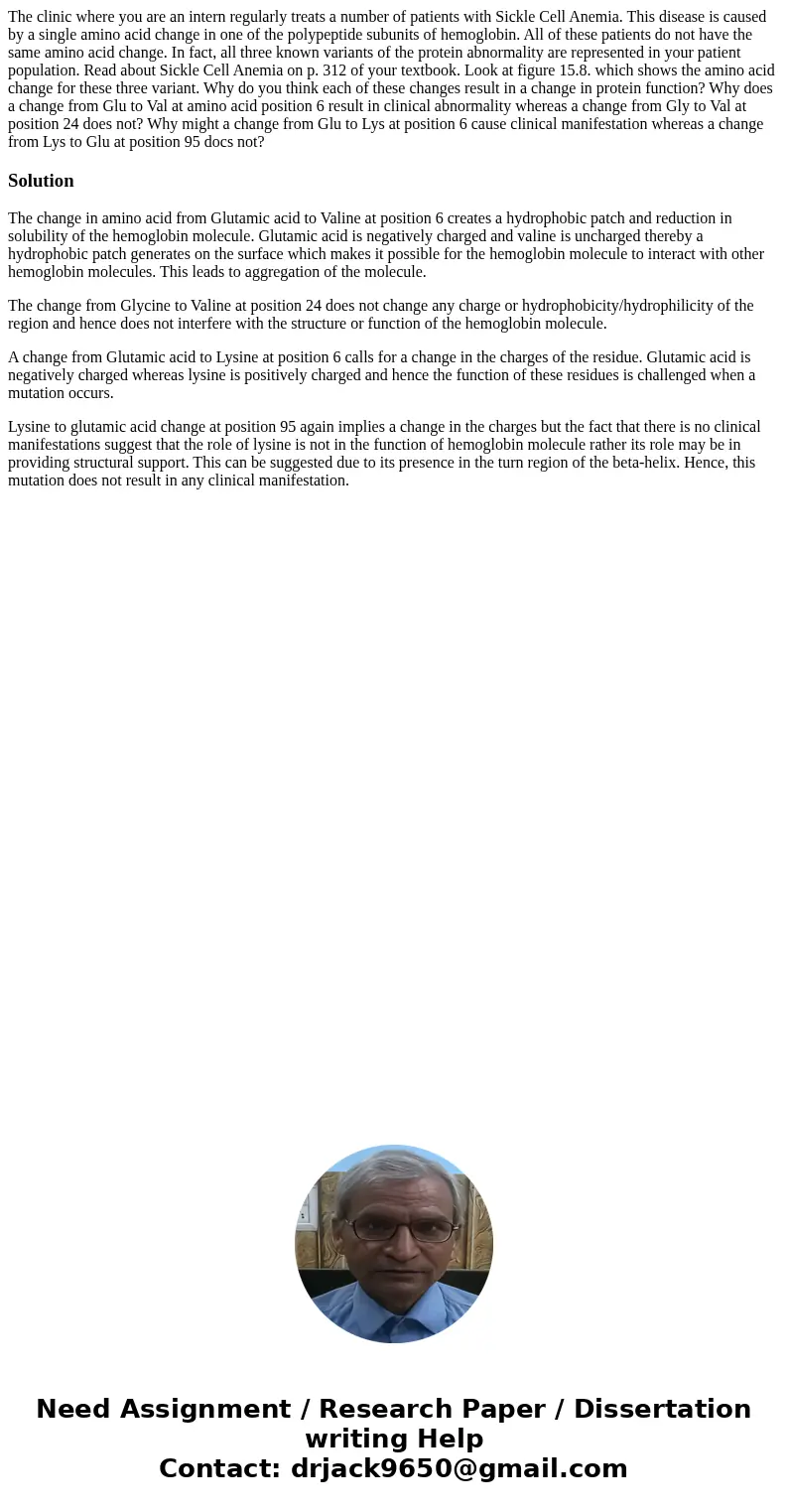The clinic where you are an intern regularly treats a number
Solution
The change in amino acid from Glutamic acid to Valine at position 6 creates a hydrophobic patch and reduction in solubility of the hemoglobin molecule. Glutamic acid is negatively charged and valine is uncharged thereby a hydrophobic patch generates on the surface which makes it possible for the hemoglobin molecule to interact with other hemoglobin molecules. This leads to aggregation of the molecule.
The change from Glycine to Valine at position 24 does not change any charge or hydrophobicity/hydrophilicity of the region and hence does not interfere with the structure or function of the hemoglobin molecule.
A change from Glutamic acid to Lysine at position 6 calls for a change in the charges of the residue. Glutamic acid is negatively charged whereas lysine is positively charged and hence the function of these residues is challenged when a mutation occurs.
Lysine to glutamic acid change at position 95 again implies a change in the charges but the fact that there is no clinical manifestations suggest that the role of lysine is not in the function of hemoglobin molecule rather its role may be in providing structural support. This can be suggested due to its presence in the turn region of the beta-helix. Hence, this mutation does not result in any clinical manifestation.

 Homework Sourse
Homework Sourse